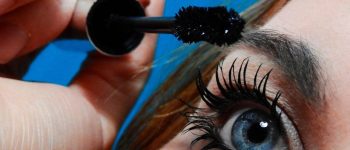Have you ever heard of eyelash mites? These tiny, eight-legged creatures known as Demodex mites might sound like something out of a horror movie, but they are actually a natural part of our body’s microbiome. Today, we’ll uncover the secrets of these invisible parasites, how they affect our eyes and skin, and the best ways to keep them in check.
What Are Eyelash Mites?
Eyelash mites, scientifically known as Demodex mites, are microscopic parasites that reside in or near the hair follicles on our face and eyes, predominantly near the lashes and eyebrows. Measuring just three-tenths of a millimeter, they are too small to be seen with the naked eye. Under a microscope, however, you would notice their semi-transparent, cigar-shaped bodies and eight legs neatly arranged in four pairs.
A Hidden Population
Believe it or not, we all have a small number of these mites living on our eyelids. They typically remain hidden in the folds and edges of our lids during the day, only venturing out at night to feed, lay eggs, and excrete waste. While this might sound unsettling, these mites serve a purpose by removing dead skin cells and excess oils from the surface of our skin.
When Harmless Becomes Harmful
Under normal circumstances, Demodex mites pose no threat. However, certain factors can cause their populations to multiply rapidly. Blocked oil glands, which provide them with abundant nourishment, and the natural aging process can contribute to an increase in mite numbers. Unfortunately, when their populations become too high, they can lead to eye and skin problems.
The Impact on Your Eyes
One common consequence of an excess of eyelash mites is a condition called blepharitis. Specifically, anterior blepharitis occurs at the front edge of the eyelid where the lashes emerge. Symptoms of this condition include red or dry eyes, swollen eyelids, sticky lashes, itching, burning or stinging sensations, grittiness, and crustiness around the outer edge of the lid. Additionally, mite infestations can cause dry and itchy skin, and even damage the oil glands at the edges of the eyelids and lashes.
Diagnosing and Treating Eyelash Mites
To determine if blepharitis is caused by eyelash mites, a healthcare professional will use a special magnifying instrument to examine the affected eyelid. They may also take a sample of the skin, oil, or eyelashes for further examination under a microscope. If mites are indeed the cause, treatment involves gentle and thorough cleaning of the affected area several times a day. In some cases, a medicated cream may be prescribed to trap and prevent the mites from reproducing. It’s important to discard any eye makeup used during the infestation and refrain from sharing eye products, especially mascara, as mites can spread from person to person. Finally, maintaining good eye hygiene in the future is crucial to prevent recurrent infestations.
Conclusion
Eyelash mites, although invisible to the naked eye, play a role in our body’s natural ecosystem. While they can cause problems when their numbers rise, timely detection and proper treatment can help alleviate the symptoms associated with their presence. Remember to prioritize eye hygiene and consult a healthcare professional if you suspect an infestation. To learn more about maintaining healthy eyes, visit Ekilove – your trusted source for eye care information.




